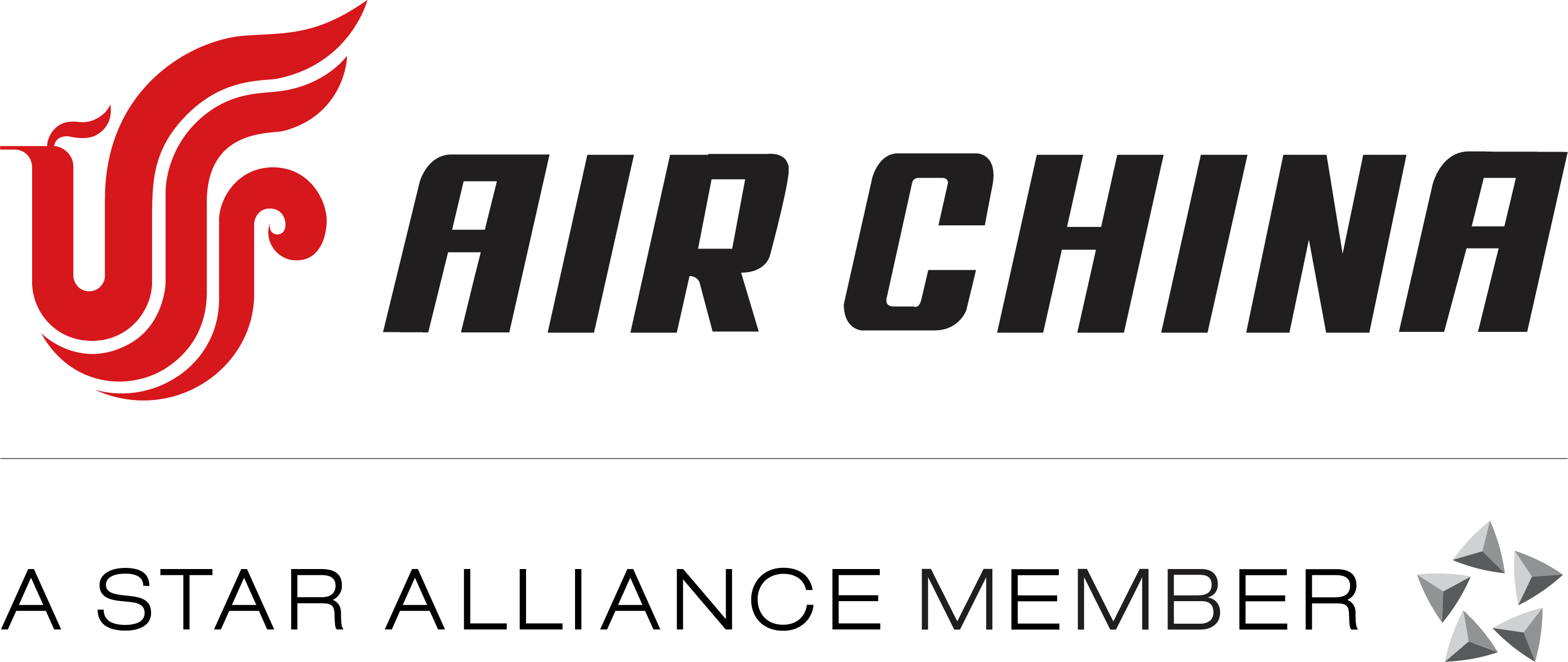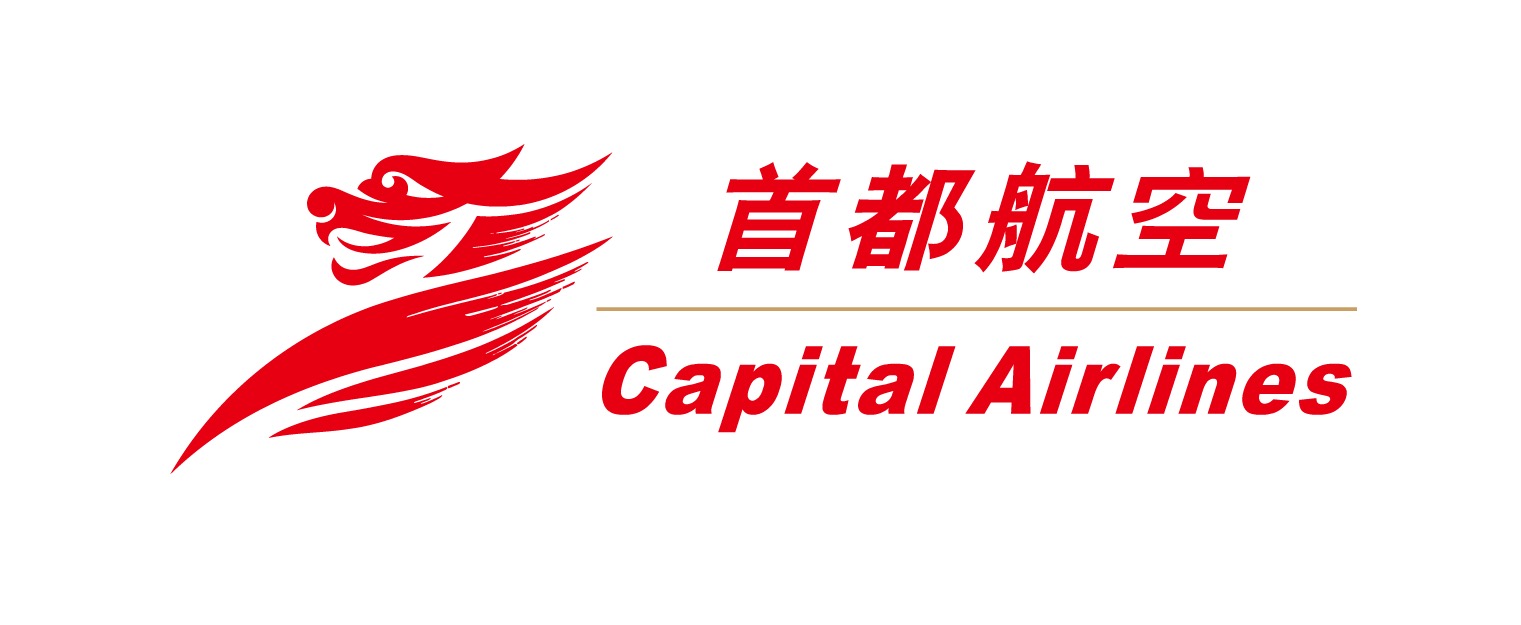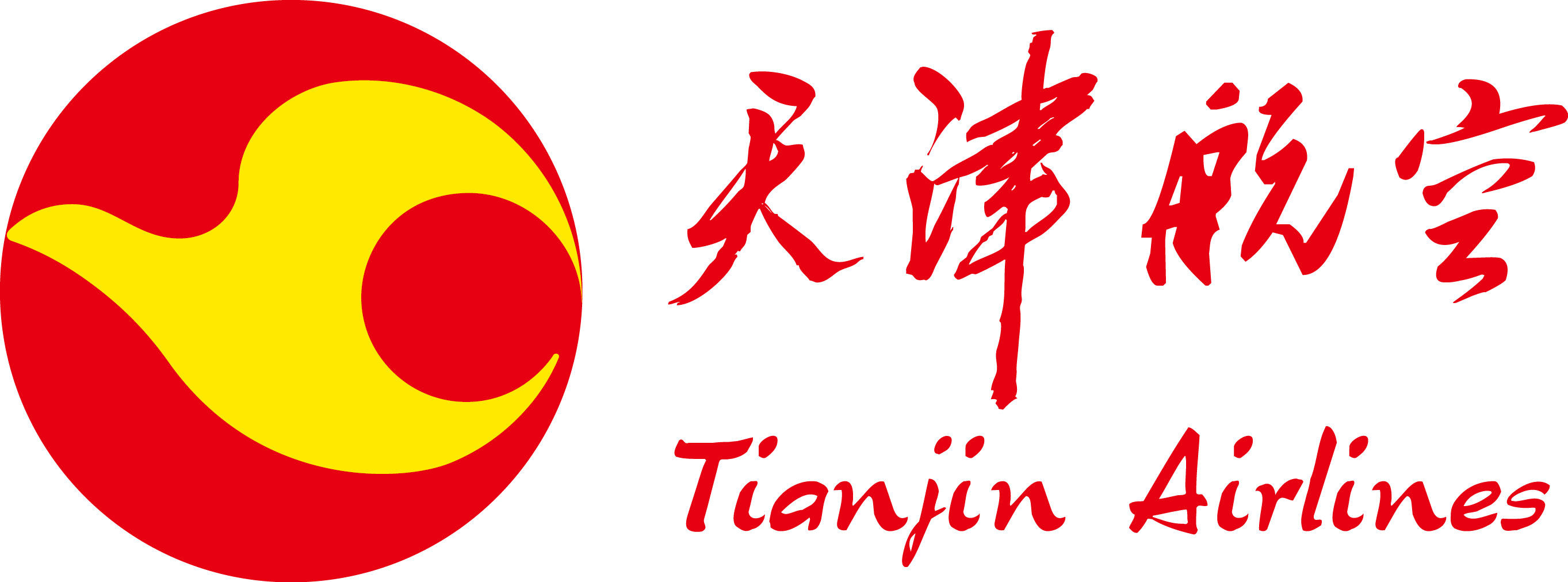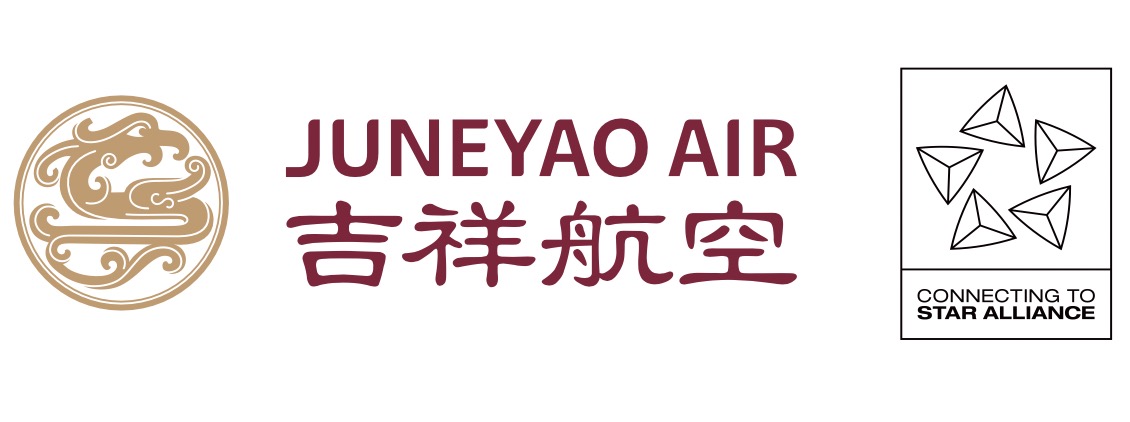Please note that the information provided here is for reference purposes only. Ensure you verify any related information directly from the official resource to avoid any misinformation or understandings: https://www.mct.gov.cn/
Air:
China’s principal international airports are Beijing, Shanghai, Guangzhou, Hong Kong, Chengdu, Xi’an and Kunming. There are direct flights between these cities and major British airports such as London Heathrow, London Gatwick, Manchester and Edinburgh.

Some major airlines flying to China:
China has an extensive domestic flight network with direct connections between the main tourist cities such as Beijing, Xi’an, Shanghai, Chengdu, Guilin and Guangzhou. Other regions including Xinjiang, Gansu, Yunnan and Guizhou also have flights to major transportation hubs such as Beijing and Shanghai.
For medium- and long-distance travel in China (i.e. where the distance between the two places exceeds 1,000 km), tourists are recommended to travel by plane, which is comfortable and fast. Tickets can be booked on the airlines’ websites. Some major domestic airlines include:
- Air China http://www.airchina.com.cn/en/index.shtml
- China Eastern Airlines http://www.ceair.com/
- China Southern Airlines https://www.csair.com/en/index.shtml
- Hainan Airlines http://www.hainanairlines.com/US/US/Home
Tips:
- In general, each passenger on a domestic flight enjoys a free checked baggage allowance of 20 kg in economy class, 30 kg in business class, and 40 kg in first class.
- Some cities have two airports, and each airport normally operates both domestic and international flights. Pay attention to which airport you will be using when purchasing tickets.
- Beijing: Beijing Capital International Airport http://en.bcia.com.cn/
Beijing Daxing International Airport https://www.bdia.com.cn/#/
- Shanghai: Shanghai Hongqiao International Airport
https://www.shanghaiairport.com/index_enhqjc.html
Shanghai Pudong International Airport https://www.shanghaiairport.com/index_enpdjc.html
- Chengdu: Chengdu Shuangliu International Airport http://www.cdairport.com/en/
Chengdu Tianfu International Airport (website not yet available)
High-speed train:
China’s high-speed trains, also known as bullet trains, are popular for their punctuality, comfort and safety. High speed train is one of the most convenient ways to travel around China.
Types of High-speed Trains in China:
| Type of Train | In Chinese | Top Speed |
| C/G class | 城际/高铁 | 350km/h |
| D class | 动车 | 250km/h |
Popular Train Routes in China:
| Route | Distance
(km) |
Type
(class) |
Duration
(hours) |
| Beijing – Shanghai | 1,318 | G | 4.5-6 |
| Beijing – Xi’an | 1,075 | G | 4.5-6 |
| Xi’an – Chengdu | 700 | G | 3-4 |
| Shanghai – Hangzhou | 169 | G | 1-1.5 |
| Guangzhou – Hong Kong | 142 | G | 1 |
Seat Classes:
- Business Class: Business class is the most luxurious class on high-speed trains in China, and as you would expect, it costs the most. Each row has three seats (2+1), all of which can recline to a horizontal position.
- First Class: With four seats in a row (2+2), first class seats are more spacious and comfortable than second class, but the price is higher.
- Second Class: Second class seats are the most affordable seats on high-speed trains. Each row has 5 seats (2+3) and there is less leg room.
Tips:
- Train tickets should normally be booked 15 days in advance. Passengers can purchase tickets through the official China railway website 12306.cn (in English: https://www.12306.cn/en/index.html). It is recommended to take the train rather than fly for most journeys under 1,000 km.
- Baggage allowance for high-speed trains: The maximum carry-on baggage allowance for each passenger is 20 kg, and the total dimensions (length + width + height) of each item must not exceed 130 cm. Carry-on baggage in excess of the limit is subject to an excess baggage fee and must be checked in.
Ordinary trains:
Ordinary trains have a much longer history in China than high-speed trains. As a result, the facilities are more basic, and the tickets are cheaper. These trains are suitable for budget travellers, especially those who would like to save on the cost of accommodation by taking an overnight sleeper train.
Types of Ordinary Trains in China:
| Type of Train | In Chinese | Top Speed |
| Z class (express) | 直达 | 160km/h |
| T class | 特快 | 140km/h |
| K class | 快速 | 120km/h |
Popular Overnight Train Routes in China:
| Route | Distance
(km) |
Type
(class) |
Duration
(hours) |
| Beijing – Xi’an | 1,075 | Z | 12 |
| Beijing – Shanghai | 1,318 | Z | 14.5 |
| D | 12.5 | ||
| Beijing – Guangzhou | 2,300 | Z | 21.5 |
| D | 10.5 | ||
| Xining – Lhasa | 1,960 | Z | 21 |
Seat Classes:
Soft sleepers and deluxe soft sleepers are recommended for overnight trains.
- Soft Sleeper: Each soft sleeper compartment has 4 berths (two on each side). Soft sleeper class is comfortable and prices are reasonable.
- Deluxe Soft Sleeper: This is the highest-class sleeper train ticket and it comes at the highest price. Each enclosed compartment contains two berths and a private seating area.
Tips:
- Baggage allowance for ordinary trains: The maximum carry-on baggage allowance for each passenger is 20 kg, and the total dimensions (length + width + height) of each item must not exceed 160 cm. Carry-on baggage in excess of the limit is subject to an excess baggage fee and must be checked in.
- Most cities in China have more than one train station and each station normally has both ordinary trains and high-speed trains. Please pay attention to the specific name of the train station on your ticket and make sure you are going to the right one before setting out. Some of the main stations in major cities are listed below:
– Beijing: Beijing Railway Station, Beijing West Railway Station, Beijing South Railway Station, Beijing North Railway Station
– Xi’an: Xi’an Railway Station, Xi’an North Railway Station
– Shanghai: Shanghai Railway Station, Shanghai Hongqiao Railway Station
– Hangzhou: Hangzhou Railway Station, Hangzhou East Railway Station
– Chengdu: Chengdu Railway Station, Chengdu East Railway Station
– Guangzhou: Guangzhou Railway Station, Guangzhou South Railway Station
– Hong Kong: Hung Hom Railway Station, West Kowloon Railway Station
Yangtze River Cruise:
A Yangtze River cruise between Chongqing and Yichang is a popular way to discover China and travel at a slower, more relaxed pace. International-standard cruises offer English-speaking guides and all cabins are equipped with private balconies that allow guests to enjoy the breath-taking river scenery. A variety of cultural activities are offered during the trip, such as morning tai-chi and onshore excursions such as the Three Gorges Dam tour.
- Cruise Highlights: The natural scenery of the Three Gorges of the Yangtze River and the Three Gorges Dam
- Duration: 4 days for the downstream cruise from Chongqing to Yichang, 5 days for the upstream cruise from Yichang to Chongqing
- Best time: April to October
Beijing metro enables ‘tap-and-go’ fare payment for foreign MasterCard and Visa card holders
Beijing becomes the first city on the Chinese mainland supporting contactless fare payments in rail transit for foreign MasterCard and Visa card holders.
Starting Friday, international visitors can use MasterCard and Visa cards issued overseas to take rides on the city’s entire rail transit network, and pay automatically according to the same billing rules as the local residents.
Beijing has upgraded more than 20,000 sets of facilities at subway stations of its rail transit system to facilitate the new payment initiative, which supplements current payment methods such as UnionPay cards and QR codes, to further improve the experience of international visitors for rail transit, the Beijing Municipal Commission of Transport announced at the ongoing 2024 China International Fair for Trade in Services.
The service is comprehensively available at all gates across 490 stations along 27 subway lines (including two airport lines, Xijiao Line and Yizhuang T1 Line), covering a total length of 836 km. Additionally, the Suburban Railway Line S2 is also part of this scheme.
“Compared with previous situations where foreign visitors had to buy tickets with cash or use their cards at manual ticket counters, the new access helps save time and avoid the hassle of purchasing tickets for them,” said Zhao Zilong, deputy director of the Beijing Municipal Commission of Transport.
Beijing will also launch an international version of the “Yitongxing” app, which supports registration of foreign phone numbers and identity verification for foreign nationals, allowing them to use QR codes for travel purposes.
Optimizing the payment service highlights Beijing’s determination to continue to expand its high-level opening up as an international exchange center, said Wang Ying, an official with the financial office of the Beijing Municipal Committee of the Communist Party of China.
Data shows that Beijing now has nearly 18,000 businesses that accept foreign cards, and all hotels rated four stars and above, as well as major cultural and tourism sites, are equipped with foreign currency exchange facilities.
From January to July this year, Beijing saw 1.995 million inbound tourists, an increase of 227.9 percent year on year. By streamlining business processes and adjusting payment limits, the number and value of mobile payments made by foreigners in Beijing in the second quarter have doubled that in the first quarter of this year.
Metro
A total of 55 cities in China have metro lines. Foreign travelers can apply for metro passes at the metro station or use the Alipay APP to take the metro.
1. Foreign travelers can buy single journey tickets at the ticket office or self service machines at the metro station. Frequent travelers can apply for metro passes at the ticket office with your passports. You can make payments in cash or by WeChat or Alipay.
2. Foreign travelers can open the Alipay APP on your mobile phones, click on “Transport”, and select “City”. After completing identity verification, you will obtain a QR code for the metro pass. You can enter and exit the metro station by having the QR code scanned.
Bus
Foreign travelers can pay in cash or by bus cards or the Alipay APP to take the bus.
1. Foreign travelers can pay in cash (RMB) to take buses. Buses usually do not provide change, so travelers need to prepare small change in advance.
2. Foreign travelers can take your passports to the service outlets of the bus companies to buy bus cards. Payment for the cards can be made in cash or by WeChat or Alipay.
3. Foreign travelers need to open the Alipay APP, click on “Transport”, and select “City”. After completing identity verification, you will obtain a QR code for public travel. You need to have the QR code scanned when getting on and off the bus.
Online ride-hailing services
Foreign travelers can use Alipay or WeChat to book online ride-hailing services.
1. Foreign travelers can open the Alipay APP, click on “Transport”, select “Taxi”, and enter both the pickup location and the destination to book a ride-hailing service.
2. Foreign travelers can open the WeChat APP, click on “Me”, select “Services”, scroll down and click on “Mobility” or “Ride Hailing”, and enter both the pickup location and the destination to book a ride-hailing service.
3. Download Didi-Greater China APP, which supports foreigners to use foreign mobile phone numbers and international credit cards to register, and book online ride-hailing services once registered. Open Didi-Greater China APP, confirm the pickup location and the destination, select the preferred services(Express, Taxi, Premier, Luxe), and book a ride hailing service.
Car leasing services
Foreign travelers can rent cars at international airports and downtown service outlets. You can also use car leasing APPs or search for “mini programs for car leasing” on Alipay or WeChat. Once registered, you can make a reservation for car leasing.
1. Foreign travelers who are going to rent cars need to bring your passports or Foreign Permanent Resident ID Cards, valid Chinese driver’s licenses, and international or domestic credit cards.
Note: Foreign travelers renting a car for the first time need to have your identity document information verified at least one working day in advance.
2. Foreign travelers applying for Chinese driver’s licenses must take your passports, overseas driver’s licenses with a Chinese translation, recent one inch half-length, bareheaded, full-faced color photos against white background, and other necessary documents to public security traffic management service halls to apply for Provisional Driving Permits for compact cars. Foreigners who enter China for a short-term stay can apply for Provisional Driving Permits with a validity period of 3 months. For those who intend to stay longer than 3 months, the validity period can be extended to a maximum of one year. The permits can be used whenever the holders reenter China during the validity period without the need for reapplication.
Note: China has signed agreements for mutual recognition and exchange of driver’s licenses with France, Serbia, Belgium, and the United Arab Emirates. This allows individuals holding driver’s licenses from the aforementioned countries to drive in China or obtain Chinese driver’s licenses without taking a test.










